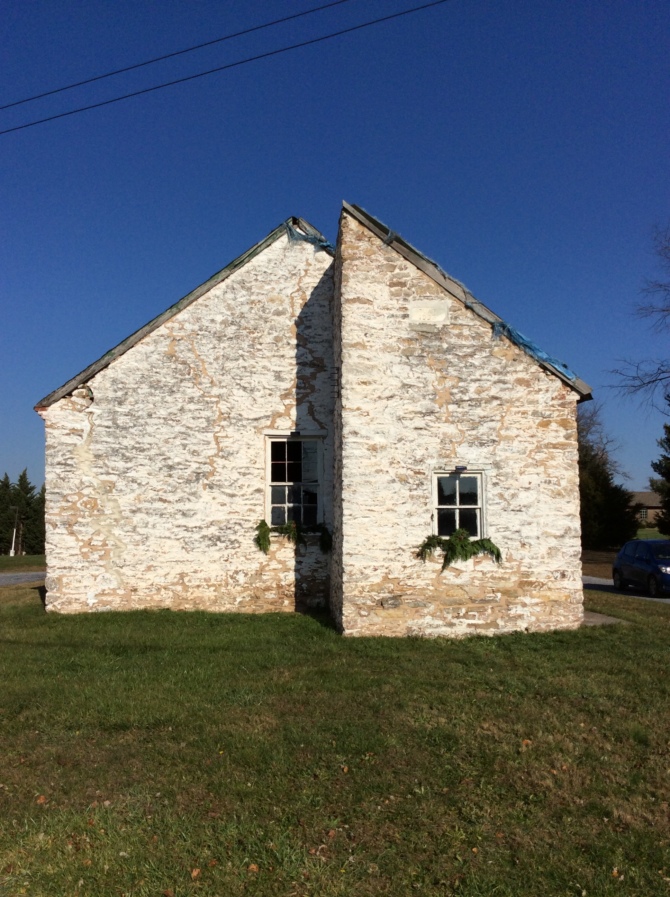Browse by Category
- All Categories
- 150th Anniversary
- Frederick County
- State Parks
- National Park Service
- Antietam
- Washington County
- Newcomer House
- 1865
- Literature
- Recreation
- Living History
- Museums
- Carroll County
- Historic Preservation
- Food/Dining
- Civil War Trails
- African American History
- Transportation
- Main Streets
- Education
- Women's History
- Geotrail
Bugle Call
New Organizations Form to Preserve Maryland’s Heritage
May 2, 2016

Each May, Americans are encouraged to celebrate buildings and landscapes of historical significance during Historic Preservation Month. This year brings even more cause for celebration, as 2016 marks the 50th anniversary of the National Historic Preservation Act (NHPA). Although preservation was by no means a new concept at this time, the 1966 act created three major tools which continue drive the field today: the National Register of Historic Places, the National Historic Landmarks list, and the State Historic Preservation Offices. Here in the Heart of the Civil War Heritage Area, several new nonprofit organizations have formed recently to address pressing preservation concerns. Threatened by private development or aging infrastructure, community members have stepped up to raise awareness and funds for these invaluable gems of Civil War Maryland.
The Burkittsville Preservation Association, Inc. (BPA) formed to save the Shafer Farm, an 1840 farmhouse that served as command post for Union General William Franklin during the Battle of South Mountain in September 1862. Situated at a high elevation overlooking Crampton’s Gap in the Burkittsville Historic District, the property includes a bank barn and stone smokehouse in addition to the farmhouse. The house has sat empty since the last Shafer occupant passed away, at age 103, in 2003. Today, the farmhouse’s most pressing preservation needs include sealing the roof from leaks, stabilizing the roof joist and supporting brick material, installing a gutter on the west wall to move water away from the foundation, and stabilizing the west wall and west roof apex. The 1840s barn structure requires stabilization due to the loss of a section of the roof. The volunteers who formed BPA envision the property as a publicly accessible historic site where for visitors can learn about the Maryland Campaign of 1862 as well as 19th century farm life.
The stewards of Historic Rocky Springs Chapel, Inc. (HRSC) came together with a goal of restoring the c. 1839 Rocky Springs School House in addition to the 1882 chapel (still in use). The one-story schoolhouse, constructed from local fieldstone painted white, witnessed a skirmish leading up to the July 1864 Battle of Monocacy and operated until 1930. HRSC would like to restore the schoolhouse as a center of historical interpretation and research, telling the story of German and Swiss immigration in the Rocky Springs area of Frederick County. Following the Secretary of the Interior's Standards, the group plans to rebuild the schoolhouse roof, reconstruct its bell tower and reinstall the original school bell, repair the exterior and interior stone masonry, restore the interior plaster work, and rebuild the wooden floor. The project will also involve archaeological excavation of the floor area and the cataloging and analysis of any artifacts discovered during the project.
The Battle of Falling Waters 1863 Foundation, Inc. (BOFW) seeks to preserve and interpret the final battle of the Gettysburg Campaign in Maryland: the Battle of Falling Waters, which involved nearly 10,000 troops and resulted in an estimated 850 casualties in mid-July 1863. Troops from Confederate General Robert E. Lee’s Army of Northern Virginia became trapped attempting to cross the Potomac River at Williamsport when Union troops destroyed the Falling Waters pontoon bridge and heavy rain made the river swell. Clashes broke out between Lee’s men and General George Meade’s army, leading to the mortal wounding of CSA Brigadier General James Johnston Pettigrew. The Civil War Trust acquired the first three and a half acres for preservation in early May. BOFW hopes to add interpretive signage and open a portion of the battlefield to the public in the near future.
Looking for an opportunity to get up close to history during Preservation Month? Pick up a self-guided walking tour brochure at any of the visitor centers in the Heritage Area, or take a weekend walking tour with the Historical Society of Frederick County.
Photographs, from top: front view of the Rocky Springs School House; the Shafer farmhouse; an eastern view of the school; a rear view of the 1830 Daniel Donnelly House, pictured in period drawings of the battle.
